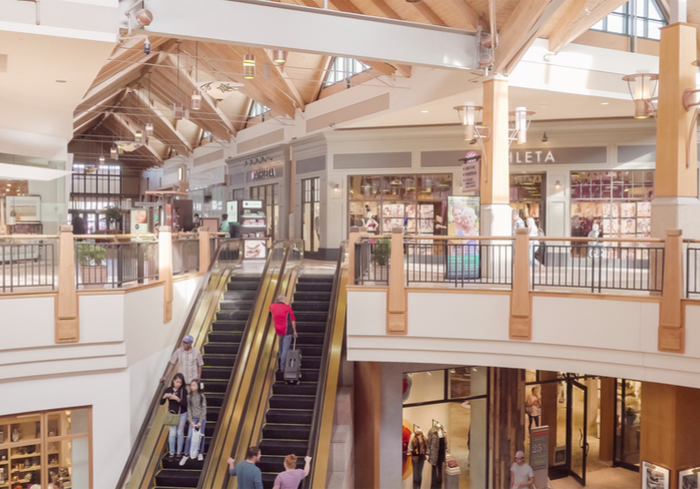Redeveloping Malls With Apartments, Hotel And Restaurants

As anchor stores scale back their brick-and-mortar presence in malls, is their departure necessarily a big loss for shopping centers? Class A malls might, in fact, benefit by finding new uses for the space these stores leave behind.
Many of the deals mall owners made with department stores happened 30 years ago or more. In the case, of Sears, which recently announced plans to close 72 stores, some of those deals occurred 50 years ago. Times were different then: In those days, anchor stores drove traffic into the malls.
Cushman & Wakefield Vice President of Retail Intelligence Garrick Brown told PYMNTS.com in an interview, “You basically gave that space away to get them to come in, and where you made the money was on the small shops.”
If those stores don’t drive traffic, they are essential dead weight — and a missed opportunity for revenue. Anchor stores often pay mere few dollars per square foot and, in some cases, those stores are paying close to pennies on the dollar per square foot. By comparison, small shops in malls can start at around $100 per square foot.
As a result, malls are turning towards new uses for anchor stores that attract shoppers and bring in revenue, such as food halls. Additionally, malls can host a variety of other uses in the place of anchor stores, Brown said: An empty Sears space could be home to a medical facility or a JCPenney could come traditional office space. In other cases, space left behind by a Macy’s could become home to hospitality use. Depending on the location of the mall, a cool upscale boutique hotel or a more traditional chain hotel. Alternatively, malls could be home to apartments — and help the retail that’s left in malls.
“I think you’re even going to see that malls are doing well looking at bolstering themselves by adding housing components” Brown said, adding that malls having people live on site have a “built-in captive audience.”
When it comes to mall design, Cooper Carry, an architectural design firm that is involved in mall projects, believes that though retail benefits from having space where people live, work or visit above it. David Kitchens, a principal with the firm, said their urban infield development is based on an “urban main street philosophy” that builds walkable communities with authentic live, work and play environments.
And, when it comes to redevelopment sites, Kitchens noticed that urban environments might make a site more attractive — but that all depends on the specific location of the land. Even so, malls sites are often said to be some of the most attractive parcels that a developer can find, according to Kitchens.
Keeping Shopping Centers Alive
Mall redevelopment was a key theme at the International Council of Shopping Centers’ annual RECon convention in Las Vegas in May, reported CNBC. Some landlords announced new deals for residential uses, while retailers and real estate owners in general seemed to be collaborating more closely to keep shopping centers alive.
“You don’t have to fill retail with retail anymore,” remarked Greg Maloney, head of JLL’s Americas Retail business, at the event. Mixed use is the new wave, and anything is fair game — there’s no such thing as a cookie-cutter solution anymore.
Simon Property Group, the major U.S. mall owner, plans to open at least five Marriott International hotels at its properties in the coming years, the company announced during RECon. PREIT, a smaller Northeast competitor, wants to add thousands of residential and hotel units across a dozen properties. Other mall owners are incorporating fitness operators, spa service providers and entertainment options. They are also bringing in individual fast-casual eateries, which are more resistant to consumer habits that seem to be migrating more and more online every day.
“Restaurants are viewed as strong traffic-drivers that draw frequent and regular customer visits, which create opportunities for the neighboring retail offer,” according to a study by CBRE entitled “Now Serving Retail Growth. “For retail landlords, expanding a restaurant offering is a way to counterbalance the declining sales seen in low-growth soft goods categories and build a tenant mix more resistant to eCommerce penetration.”
They key for mall operators is to focus on tangible experiences — like dining out with friends or family — that eCommerce retailers like Amazon can’t deliver in a package.
But “convenience is the challenge,” Brown said. “That’s where eCommerce is seizing a lot of ground.”